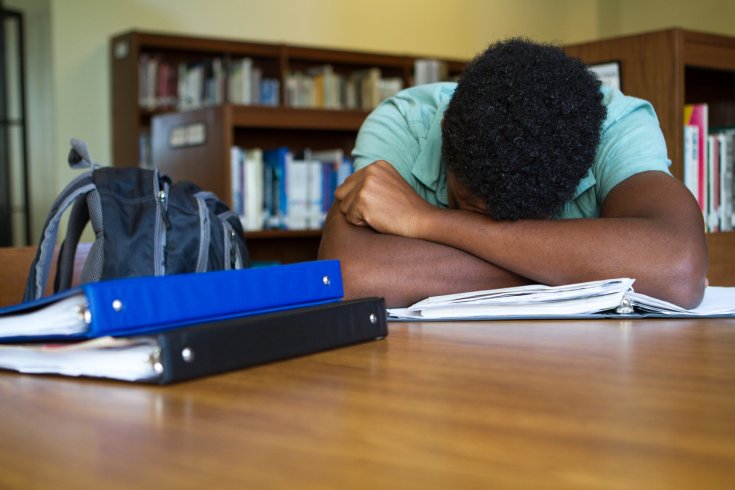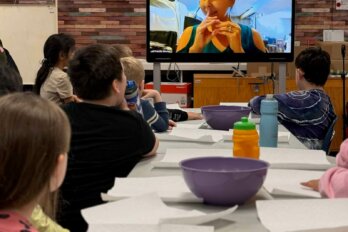On September 30, 2016, the mother of a Black grade one student missed several calls from her daughter’s school in Mississauga, a suburb of Toronto. When she called back, a school official passed the phone to a police officer, who informed her that her six-year-old daughter had been placed in handcuffs. Upon arriving at the school, the mother learned that the police had been called in by school staff because her daughter had been reportedly acting in a violent manner. The two police officers had handcuffed the girl—who weighed a total of forty-eight pounds and was unarmed—by attaching her hands and her feet together at the wrists and ankles.
According to the Toronto Star, while the girl’s mother said that her daughter had been treated like a “dog” or a “monster” and not a human child, Peel Regional Police spokesperson Sergeant Josh Colley defended the fact that a young Black child had been handcuffed by stating that it had been done for “the safety of other students and ultimately the child.” School officials issued no immediate apology, and Sergeant Colley told the media that it was “disgusting” that this behaviour could be construed as racist. The family’s lawyer, however, alongside the African Canadian Legal Clinic, went on to file complaints against both the school and the police for anti-Black racism.
It is difficult to imagine how any child weighing forty-eight pounds could be thought to pose such a danger to anyone, let alone in the presence of school officials and two police officers. Only by attending to the ongoing governing power of anti-Blackness can we make sense of how two armed men could decide to handcuff an unarmed child, likely one-quarter of their size, in the name of “safety.” What this incident illustrates is that, in the eyes of white society and state institutions, Black children are not conceived of as children at all, and supernatural, dangerous abilities far beyond their age, size, and physical capabilities are attributed to them. The way that Black children and youth are treated—and the way that their suffering is largely ignored or unseen—makes clear that anti-Blackness determines their experiences within the education system and beyond.
Education is one of the bedrocks of Canadian society. Legislated as “a fundamental social good,” it is intended to provide both socialization and opportunities to develop youth’s minds and relationships, and to help them build their futures. This is largely rhetorical; schools continue to be underfunded and under-resourced, and teachers are widely devalued and poorly compensated. Nonetheless, publicly funded education is generally understood to create options and facilitate advancement in society. For many Black students, though, schools are places where they experience degradation, harm, and psychological violence. Even as education environments continue to underserve many communities from different backgrounds, there are unique dimensions to the experiences of Black youth, who experience schools as carceral places characterized by neglect, heightened surveillance, and arbitrary and often extreme punishment for any perceived disobedience. Because Black youth are so often not seen or treated as children, schools too often become their first encounter with the organized and systemic devaluation of Blackness present in society at large.
Though education is seen as a “public good” and is allegedly race neutral, informal practices throughout the school systems in Canada continue to stream students based on race. Of course, class has also played a significant role in education inequalities for youth of all backgrounds, and wealth disparities reproduce unequal outcomes between children of wealthy and poor families as well. However, while race and class are inextricably linked—Black families being among the poorest in Canada—it would be a mistake to reduce the streaming of Black youth and children to an issue of class. While systemic barriers resulting from poverty have an impact on youth of all racial backgrounds, Black youth face unique and acute disadvantages because of long-standing associations linking Blackness to a lack of intelligence, and inferiority more generally.
Black youth continue to be disproportionately streamed into lower education tracks as a result of both individual prejudice and systemic factors. Racial stereotypes held by teachers play a significant role in the streaming of Black students. Instructors continue to hold racial stereotypes that affect their interactions with Black youth. For example, Black students in Alberta have expressed that instructors give African-descended students the “silent treatment” or try to dissuade these students from higher education by expressing their uncertainty, for example, that “a Black could study to become a doctor.” This treatment, widespread in many Canadian cities, has an important role in the experiences and development of Black students and their education.
According to a survey of Black students’ needs, teacher expectations play a significant role in the academic engagement of Black students. Black youth in major cities across the country have consistently named their teachers’ low expectations as a major factor when it comes to their overall engagement. These youth report that they are pressured into vocational training or into adult education, that they are not encouraged to finish on the regular academic track, and that they are steered away from challenging courses. To use the words of a Black student, Black youth often feel their presence is unwanted: “they don’t care about Black students. They don’t care if you are there or not.” In a 2006 census survey, only 54 percent of Black youth reported that they felt supported by teachers. This lack of support affects more than academic achievement; the Ontario Human Rights Commission states that it is often “in relation to their teachers that children begin to develop a perception of themselves and of the world around them.” Discriminatory treatment at this young age, then, can enact lasting damage on development.
When they are being streamed into lower-track education programs, Black students are disproportionately assigned to learning platforms that have inadequate resources. In Quebec, students with Caribbean backgrounds are three times more likely to be identified as shsmld (students with handicaps, social maladjustments, or learning difficulties) and subsequently placed in separate classes for “at-risk” students. This designation is decided by school officials, a practice that, according to the province’s Commission des droits de la personne et des droits de la jeunesse (cdpdj), has been associated with racial profiling, as it gives “substantial discretionary power to school personnel in terms of deciding which students it should be applied to.” Similarly, Caribbean and other racialized students are frequently placed in closed “welcoming classes” for new immigrants, a practice that the cdpdj found to be ill suited and deficient to meeting students’ needs, causing delays in transitioning students into regular classes. In one instance, a Haitian student in elementary school was placed in a welcoming class solely because he was Haitian, without any other evaluation. A judge found him to have been a victim of racial profiling. Following streaming in high school, Black students are then frequently directed, or pushed, into the adult sector to receive their high school diplomas.
The phenomenon of streaming has also been documented in Toronto, where Black students make up 13 percent of the student body but only 3 percent of those labelled “gifted,” compared to white students, who are one-third of the student population but more than half of those labelled “gifted.”
The informal yet demonstrable practice of streaming students according to race has been aptly coined “second-generation segregation” because of the ongoing inequities that it perpetuates. Streaming students into different tracks is demonstrably inequitable, as students in higher tracks are generally afforded more resources as well as a wider variety of teaching methods. The practice cements inequalities rather than challenges them. This disinvestment in Black youth has definite effects on their future opportunities as well as on their own sense of self-worth. The privileging of the lives and worthiness of white students demonstrates the ongoing societal devaluation of Black childhood. The racially differential treatment experienced by Black youth also demonstrates a concerted lack of empathy for the feelings and dignity of Black students on the part of instructors.
In addition to experiencing a lack of support and active streaming into lower tracks of education opportunities, Black students contend with erasure, which is itself arguably a form of violence. Both invisibility within curricula and the predominantly white demographic makeup of educators continue to negatively affect Black students. Besides one Africentric school established in Toronto, after much community agitating, and the newly available African Canadian studies material in Nova Scotian high schools, most education institutions lack content highlighting Canada’s history of slavery and segregation, and they overlook the history of Black institutions and Black resilience more generally. Not only are Black students not seeing themselves reflected and celebrated in the curriculums but the lack of racial representation in school staff is also significant. Quebec, for example, continually misses the mark of its already too-low targets for racial diversity in the makeup of educators. Largely being taught by white instructors and, therefore, being denied positive Black role models within institutions of learning only further cements the lower status of Black students.
Black students are not only treated as if they are inferior but they are also frequently treated as if they are a threat inside education settings. The presence of Black children and youth remains unwelcome and undesirable in many public schools, and their movements are closely monitored and subject to correction. While racism and harassment from other students has long played a vital role in making Black youth and children feel unwanted in many Canadian public schools, school disciplinary policies have helped to cement the undesirability of Black students that is apparent within the education system. Black youth face heightened surveillance and disciplinary measures at massively, disproportionately high rates compared to their white peers.
In addition to experiencing overtly racist treatment from teachers, Black students have likened their treatment by school officials to their experiences with the police. Montreal-based Black youth frequently report being treated by teachers as if they are in a gang solely because of their skin colour. School and security staff often dissuade these students from gathering in groups and subject them to heightened surveillance and frequent identity checks. In sum, Black youth are often treated as suspects instead of as the children they are, in the very place where children get socialized and educated. Experiencing this typecasting and demonization is deeply harmful to Black youth who are still in their formative years. The feelings of exclusion and pain cause emotional harm and limit Black students’ ability to thrive in the public-education setting. Formal and informal school discipline policies are forms of policing and ways of criminalizing of Black children and youth that position them as “captive objects” within schools.
The assumption that Black youth are less innocent than white youth, and that their mere presence harbours danger, colours disciplinary practices in public schools across the country. While repressive school practices affect all youth, racialized youth are most heavily targeted. Handled by school officials as if they are “threatening,” Black students are subjected to much more extreme disciplinary measures than white students. In a school in Durham, Ontario, an investigation by the provincial Human Rights Commission found that Black students in the Ontario school system were nearly eight times more likely to face discipline than white students.
Suspension and expulsion play important roles in banishing Black youth, particularly young Black males, from schools. Across many Canadian cities, youth of African descent are suspended or expelled at disproportionately high rates. In schools, as elsewhere in society, race plays an important role in the administration of punishment, even in the case of similar offences. Systemic racism and discrimination, as opposed to a propensity for “bad behaviour,” explain the significant differences in the ways that Black and white students are disciplined.
In Toronto, between 2011 and 2012 and from 2015 to 2016, almost half of the students expelled from the Toronto District School Board were Black, and only 10 percent of those expelled were white students. Similarly, during the 2006–2007 school year, Black students in Toronto were three times more likely to be suspended than white students. Age doesn’t seem to be a protective factor when it comes to this trend. Younger Black students have not been exempt from punitive treatment either, quite the opposite. In the same school year, nearly half of all suspensions and 14 percent of expulsions in Toronto were doled out to elementary school students. The rates remain particularly high for younger Black students in Toronto. They represented 15 percent of the student body in grades seven and eight, but nearly 40 percent of suspensions. Among this population, one in seven Black students had been suspended at least once, compared to one in twenty white students.
In Halifax, during the 2015–2016 school year, Black students made up 8 percent of the student body but 22.5 percent of total suspensions. The rate of suspensions has changed a little since the 1980s and has been protested as an injustice by the Black community dating back decades. A similar picture emerges in Quebec, where Black and other racialized students also face disproportionately high rates of suspension and expulsion. The cdpdj found that Black students, particularly Haitians, were frequently suspended and expelled in a discriminatory fashion for minor infractions, such as being late. The commission stated that they were subjected to a “zero-tolerance” framework that other students did not face.
This exemplifies perfectly the functioning of racialized punishment: actions that result in a minor sanction when committed by a white youth are punished by extreme measures when committed by a Black child or youth. Indeed, despite favourable comparisons to the United States that are frequently drawn throughout popular culture, the suspension rates of Black youth in many Canadian schools are comparable to those found in the United States; according to the United States Department of Education, Black students are suspended at a rate three times higher than white students.
These expulsions fuel a cycle of miseducation and abandonment. Special schools for expelled students are disproportionately attended by Black students. These schools have been criticized for offering too few hours and classes for students to be able to fulfill the requirements for passing all of their courses, effectively stunting their ability to further their studies or even stay engaged in the education system.
The heightened discipline directed at Black youth that creates a hostile learning environment extends beyond the treatment of Black students into the entire Black family. Black parents, as well, frequently suffer from discriminatory treatment and from the encroachment of policing in education institutions. This was seen most recently when Nancy Elgie, an eighty-two-year-old white school-board trustee, was forced to resign after calling a Black mother named Charline Grant a “nigger” at the close of a York school-board meeting in November 2016. Black parents end up on the receiving end of trespassing orders and have been reported to the Children’s Aid Society for “offences” that have included challenging school officials on whether a child needs medication for attention deficit disorder.
Even as Black students are targeted with disproportionate disciplinary measures, the same concerted attention is not necessarily granted toward protecting them from the often extreme and daily racism that many Black youth have reported experiencing from their peers. A nine-year-old Nova Scotian Black girl told acclaimed researcher Dr. Wanda Bernard that she often skipped school because of unchecked racism from her peers: “They make me hate myself.” In one case in 2017, Adrienne Charles, the mother of two elementary-school-aged Black children in Montreal, was forced to go to the media in addition to filing complaints against the school because school officials refused to take concerted action to address the virulent racism from white students that her sons experienced. While Black youth and children face heightened surveillance and extremely limited tolerance for even minor disobedience, the racist hostility of white students appears to be granted far more leniency.
Historically, Black communities did not passively accept segregation in schools, but actively contested it until it ended. At the same time, Black families have always, despite enormous obstacles, worked toward finding ways to educate their children formally or informally, regardless of the abandonment of Black youth by wider society. Indeed, Black families and Black educators have played an important role toward redressing the systemic injustices experienced by Black youth and children. Schools founded specifically to address and remedy anti-Blackness, which can be found in Toronto and Halifax, only exist because of decades of concerted organizing.
Toronto’s Africentric Alternative School, founded in 2009 as a product of Black community mobilizing and developed to counter the erasure of Black realities found in the mainstream school system, has been remarkably successful. Performance in standardized tests is well above average, with students testing above the provincial average in reading, writing, and math. The “Freedom School” organized by Black Lives Matter Toronto in the summer of 2016, though not a year-round institution, was created to counter the violence enacted by the education system and to teach Black youth about their own histories. The initiative pays great mind to Black folks marginalized by gender, sexuality, and ability as well, unlike other educational settings Black youth find themselves in.
Yet histories of resilience and overcoming obstacles are not nearly enough and cannot stand in for institutional change. “Positive racial identity” and the knowledge of Black history and present-day realities remain important in coping with daily racial hostility and humiliation in schools. But deeper institutional transformations that tackle systemic racism from an intersectional framework are required, both to address the general societal disinvestment in education that affects students of all backgrounds as well as to redress the racism structured into the education system. The realities facing Black youth in the school system are neither well known outside of the Black community, nor widely seen as a crisis, yet they are, to use the words of Afua Cooper, a “national disgrace.”
It is urgent to counter the devaluation and vilification of Black youth in the school system with a focus away from carceral trends in the education system and toward a system that invests in nurturing, rather than punishing, Black youth.
Excerpted from Policing Black Lives: State Violence in Canada from Slavery to the Present, by Robyn Maynard. Published by Fernwood Publishing.





